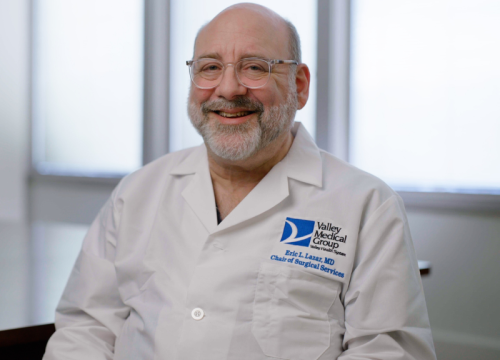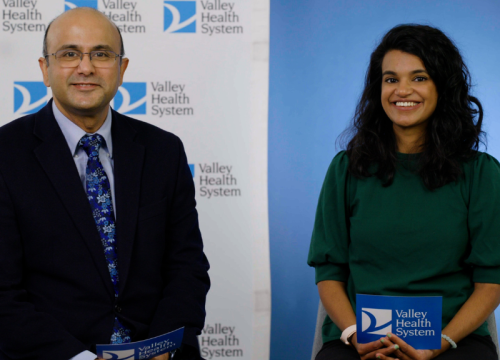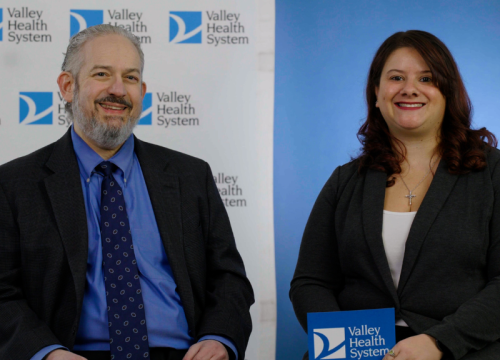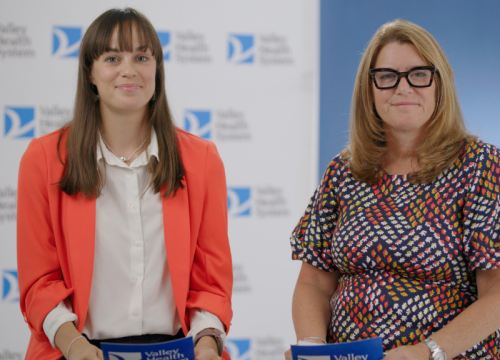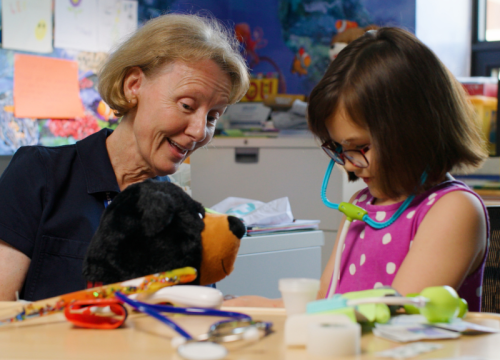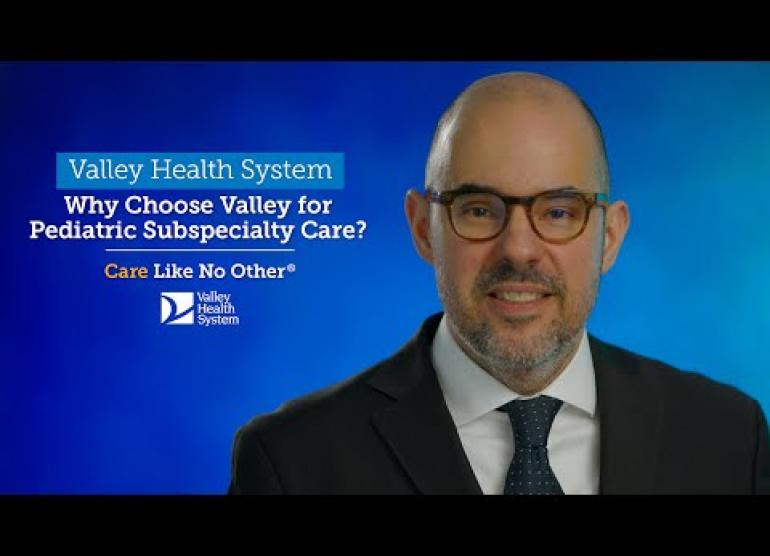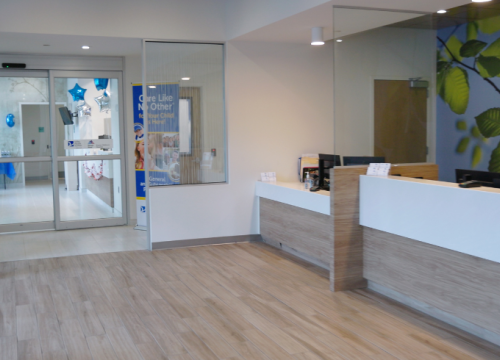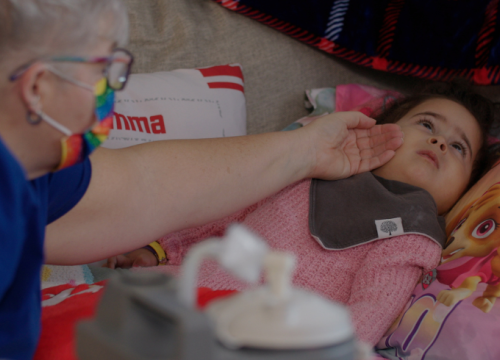The Valley Hospital is now open at 4 Valley Health Plaza in Paramus. (You may need to use 650 Winters Avenue for GPS.) All emergency care is now being provided at this location. Emergency care is no longer available at our Ridgewood campus.
A comprehensive center for children with spasticity
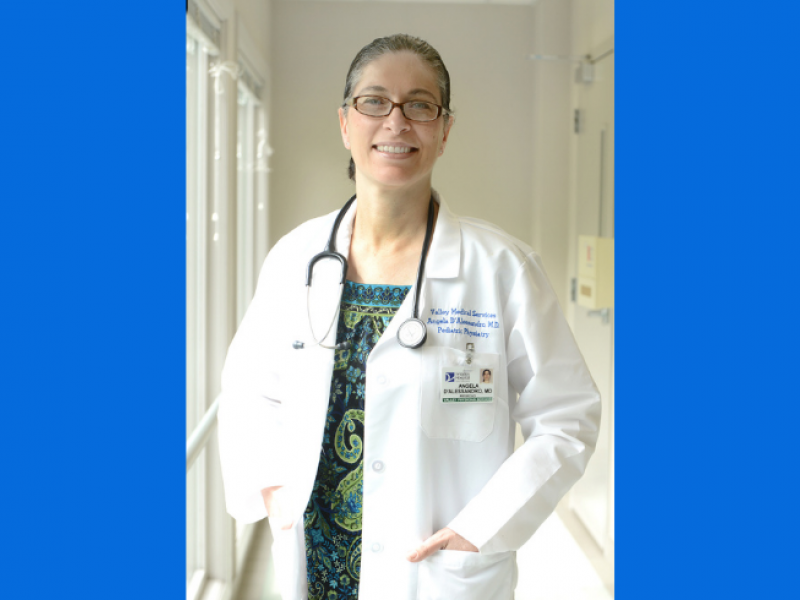
If your child has been diagnosed with spasticity, defined as muscle rigidness and spasms, which are caused by cerebral palsy, stroke, or other neurological issues, you may find yourself feeling overwhelmed by the number of practitioners and medical visits needed. These often include pediatric physicians, physical therapists, orthotists, and other subspecialists.
Valley’s Center for Pediatric Spasticity is the region’s only interdisciplinary center for children with spasticity that serves as a one-stop shop for all your medical visits. The Center offers a team-based approach to care as patients are seen by an interdisciplinary team of practitioners that include board-certified pediatric physiatrists, neurosurgeons, neurologists, orthopedists, social workers, physical therapists, orthotists, DME providers, and nurse practitioners.
The program offers patients and their families the breadth of experience and expertise that is not easily obtained elsewhere.
Treatment Offerings Like No Other
When a patient is invited to attend Valley’s Center for Pediatric Spasticity, an initial meeting is scheduled to bring all of our specialists together under one roof to work together and view the whole picture. After further evaluation of the patient’s condition, the team will gather to discuss their findings and share recommended treatment options with the family.
Our team’s goal is to foster open communication between the patient, the family, and the patient’s practitioners. From the first day we meet, everyone is on the same page and understands our holistic treatment plan. Together our team works with the patient and the family to improve comfort, function and mobility, facilitate daily care, and help increase range of motion.
The Center for Pediatric Spasticity offers many types of treatments for our patients including physical, occupational, and speech therapy, oral medications, injectable medications including Botox, bracing, orthopedic surgery, and neurosurgical procedures.
Life-Changing Neurosurgical Procedures
Pediatric patients with significant spasticity require a long-lasting, permanent treatment to allow them to move with greater ease and minimize the long-term complications of untreated spasticity. Two neurosurgical procedural options are available for these patients with advanced cases of spasticity; Minimally Invasive Selective Dorsal Rhizotomy (SDR) and Intrathecal Baclofen Pump. Both procedures are performed by Richard Anderson, MD, FACS, FAAP, our board-certified pediatric neurosurgeon.
Dr. Anderson has devoted his career exclusively to the care of children, specifically those who are experiencing neurosurgical issues. He is honored to be a member of The Valley Hospital’s Center for Pediatric Spasticity team, working with a talented, multidisciplinary team of providers. Our comprehensive, team-based approach has impacted the lives of many patients and we look forward to helping additional patients in the years to come.
Minimally Invasive Selective Dorsal Rhizotomy
Minimally Invasive Selective Dorsal Rhizotomy is performed by separating the nerve roots that are connected to the legs, testing them individually, and cutting the nerve rootlets that send misfiring signals to the muscles. Unlike other spasticity centers, our minimally invasive SDR procedure is typically performed through a one-to-two-inch incision and allows for a more rapid recovery after surgery.
Children who undergo SDR typically experience immediate improvement in their spasticity. These patients stay in the hospital only a few days after surgery and will then traditionally transfer to inpatient rehabilitation to strengthen muscles and learn how to achieve more normal movement. The SDR procedure is the most powerful, long-lasting, and permanent treatment option to reduce spasticity.
Intrathecal Baclofen Pump
Patients who experience extreme upper body spasticity or a degenerative neurological disorder may not be good candidates for the SDR procedure. These patients often can find improvement by receiving an Intrathecal Baclofen Pump implant.
Baclofen is a medication that is a powerful muscle relaxant commonly used to reduce spasticity. When an implantable pump is introduced, the target site in the cerebral spinal fluid surrounding the spinal cord can receive about one hundred times higher and more effective doses of Baclofen medication than when given orally. The pump is surgically placed under the skin over the patient’s abdomen and is refilled with medicine periodically.
Is My Child Eligible?
To see if your child is eligible to be seen in The Center for Pediatric Spasticity, please call 201-251-3304. You can also learn more by visiting ValleyHealth.com/Spasticity.


